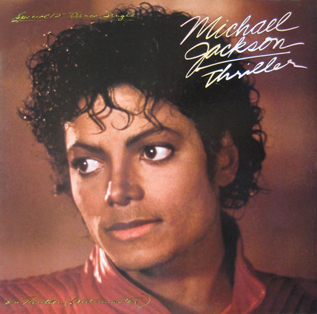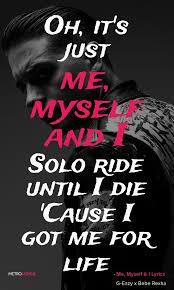Critical Reflection
Here is my Critical Reflection:
My products touched on a handful of social issues in an attempt to bring light to them in a fun but no less serious way. One of the bigger issued touched on is the common trope of killing black side characters in horror movies. This trope is often how film makers include black people in their films to show “diversity” yet use them to show stakes and get them out of the big pictures by killing them early in the movie. In my own film, while the main black character does die, the action doesn’t have the common issues that come with it. The deaths in my film don’t put more focus on white characters, just serve to build the main character Chico. Which, even then, doesn’t take away from their contributions to the film. Another issue tackled in my film is how dogs, specifically chihuahuas, are viewed and treated by some people. The film shows two perspectives, one of the owner that uses the dog solely for internet popularity and the other of the fear and hate chihuahuas get for their supposed tendency for violence. The first of these is shown at the start of the film and clearly shows an owner that only pays attention to her dog for pictures and outfits. Through Chico’s perspective, while played up for the movie, shows his unhappiness and anger toward this situation and the humans who treated him like a doll. The second perspective isn’t directly mentioned in the film but used to play up the comedy of the smallest dog causing the greatest carnage. Stereotypes put against chihuahuas absolutely impact their adoption rates and often makes people fear them unnecessarily. My film addresses these societal issues in several ways, all of which work toward bringing attention and knowledge to them.
When it comes to branding, this has been the most successful marketing of a film I’ve ever done for multiple reasons. This particular film is easy to brand as Chico is the face of it. With his recognizable fur patterns and appeal as a cute dog, people are eager to look into his image. Another draw into my branding is the juxtaposition of the cute dog with horror elements. This creates an incredibly unique image that draws people in based on the idea alone. To help spread these images, I’ve made several marketing decisions that include the branding of the film. A postcard, website, and a handful of social media accounts detail the progress of the film and demonstrate the brand it has built. For example, on social media I post behind the scenes images of our film and funny comments about Chico or the production. This lighthearted tone reminds the audience of the comedy in the film, while the profile pictures keep the horror in mind. Another way this brand comes together is the number of different platforms it’s expressed on. Using multiple iterations of the same idea makes a complete recognizable brand and reaches thousands of people. My brand of a cute dog with a horror twist is easy to explain as well, giving it an easy way to be talked about between fans and pitch to possible fans. This causes the brand to wildly spread and promote the film.
My products not only address social issues and create their own unique brand, but they also engage with the audience in a variety of ways. The most direct is through the social media channels where I directly talk to and interact with the audience. This gives a way for the audience to send comments and questions right to me as well as a way for me to immediately respond. These outlets serve to announce updates on production and produce hype for the film too. The updates tell the audience how far along the film has come and create a more personal and invested feeling in audience members. Hype is built through the investment, as the journey to make the film promises a genuinely great payoff. With both personal investment and excitement built, as the film premiers and is shown at film festivals audiences are ready to celebrate its success and share the story. My postcards also play into the film festivals with another personal connection between the film production and the audience. My postcards are funny and individual to the film and its tone. These postcards use their tone and size to be easily spread and understood between audience members. The film itself engages with the audience in many of the tropes and pop culture references it calls out. One such reference is the mention of Tik Tok in the first segment of the film, a popular app that not only will be recognized but create a connection with audiences in its relatability. Another connection in the film is the overdramatization of common horror tropes. My audience, even if they aren’t familiar with the tropes, can see the comedy in the hyperboles and share the interpretations with people who haven’t seen them with success.
Following the horror tropes that engage with the audience, they also challenge many horror conventions. The first convention I noticed in my horror movie research was the trope of having a token black character that dies early in the movie. I always hated the trope as it showed a clear bias and lack of care in the directors and writers. It goes along with the trope that the surviving characters and majority of the cast are Caucasian. In response, I flipped the trop in my film by having a mostly African American cast where the only Caucasian in the film is killed. The secondary main character of the film, Chico’s Dog Trainer, is also African American and while she doesn’t survive, she does last the longest of all the characters. Another convention challenged is how dogs are seen in a horror context. Dogs and wolves are often big, strong, and mean, common dog breeds in these films being rottweilers and German shepherds. This also reflects the trope of the killers or villains in horror movies, being ugly and overbearing. I challenged this convention by making the killer of this film the smallest, and one of the cutest, dogs with no outward threatening appearance. This challenge not only follows the comedy convention of being the opposite of what one would expect, but further cements the theme of this movie being in the place one would least expect. The final horror convention I researched was having the main character’s group get lost in a haunted or dangerous woods. I followed this convention as it’s quick to recognize in horror and easy to create a mysterious and threatening atmosphere. However, it was followed with irony, to keep in line with comedy conventions of twisting scenarios to be more humorous.



Comments
Post a Comment